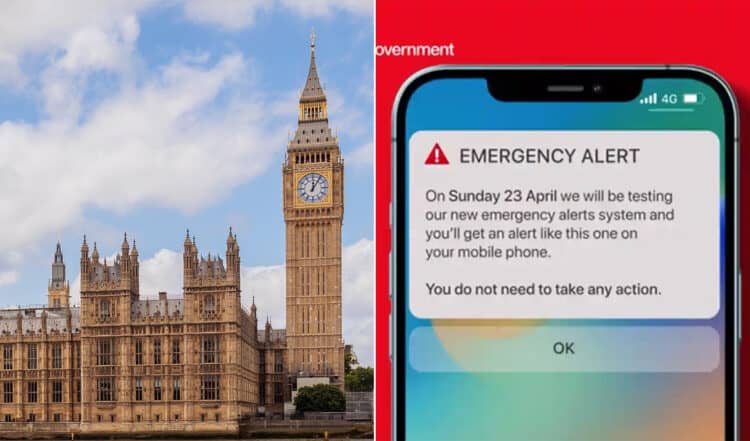Millions of people across the UK received the first-ever nationwide test of the government’s new emergency alert system yesterday at 3pm, but a LOT of people didn’t, which was kind of the point.
While the alert was scheduled to go out at 3pm, some people said they did not receive the notification, while others reported the alert arriving early or late.
Professor of telecommunications, Nigel Linge, said the failure was to be expected.
Speaking to Good Morning Britain, Linge said: “You can only do so much in the labaratory to see if something is going to work.
“This is why we test fire alarms in buildings when there are no fires.
“It is not unusual that a test of this type did not work perfectly. That is what you expect. I don’t think anyone in the mobile phone industry would be surprised that it wasn’t perfect.”
Mobile network Three
The mobile network Three said it was investigating why many of its users failed to receive an emergency alert from the government, the first nationwide test for the UK’s new national warning system.
They tweeted: “We’re aware that a number of customers have not received the test alert. We’re working closely with the government to understand why and ensure it doesn’t happen when the system is in use.”
It disrupted the snooker THREE times!
What did text say?
Well if you didn’t get it, then this is what it said…
Severe Alert
This is a test of Emergency Alerts, a new UK government service that will warn you if there’s a life-threatening emergency nearby.
In a real emergency, follow the instructions in the alert to keep yourself and others safe.
Visit gov.uk/alerts for more information.
This is a test. You do not need to take any action.
Spoof attack
There is also now a concern about a spoof attack, as a paper published by US scientists back in 2019 has resurfaced online after it claimed such a system used by governments to warn its citizens of an “imminent risk to life” could be hit with a spoof attack, reports the Indy100.
The University of Colorado Boulder researchers wrote: “Our attack can be performed using a commercially-available software defined radio, and our modifications to the open source NextEPC and srsLTE software libraries.
“We find that with only four malicious portable base stations of a single Watt of transmit power each, almost all of a 50,000-seat stadium can be attacked with a 90 per cent success rate.”
They also note it all depends on the “density of cell phones in range” However, that spoof alerts in such a crowded space could “potentially result in cascades of panic”.
Reactions
1.
2.
3.
4.
5.
6.
7.
8.
9.
10.
11.
12.
13.
14.
15.
Related: Wrexham: Some players’ make NSFW feelings about Tories…& it’s not the first time!







